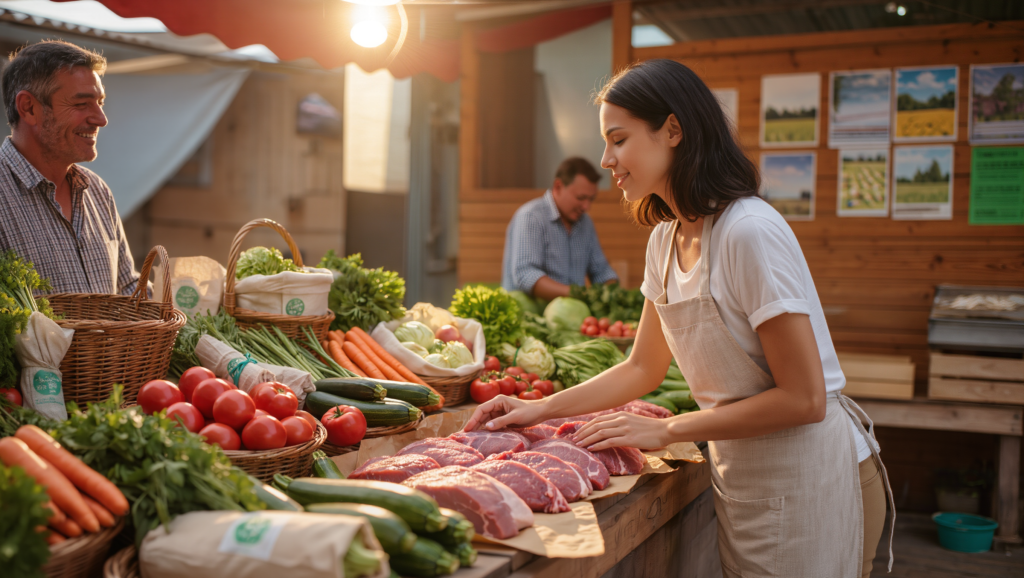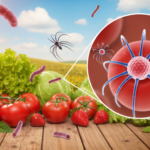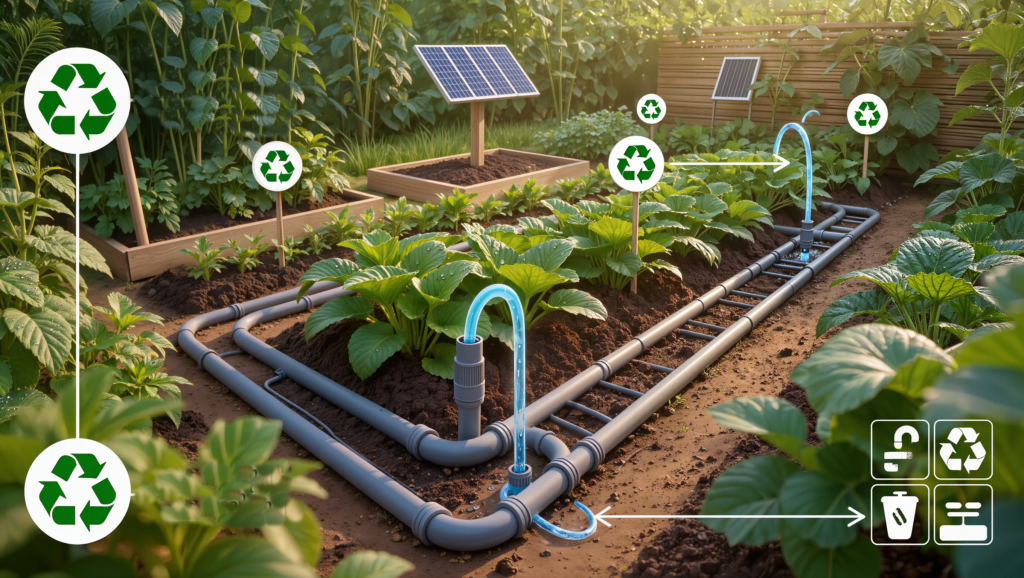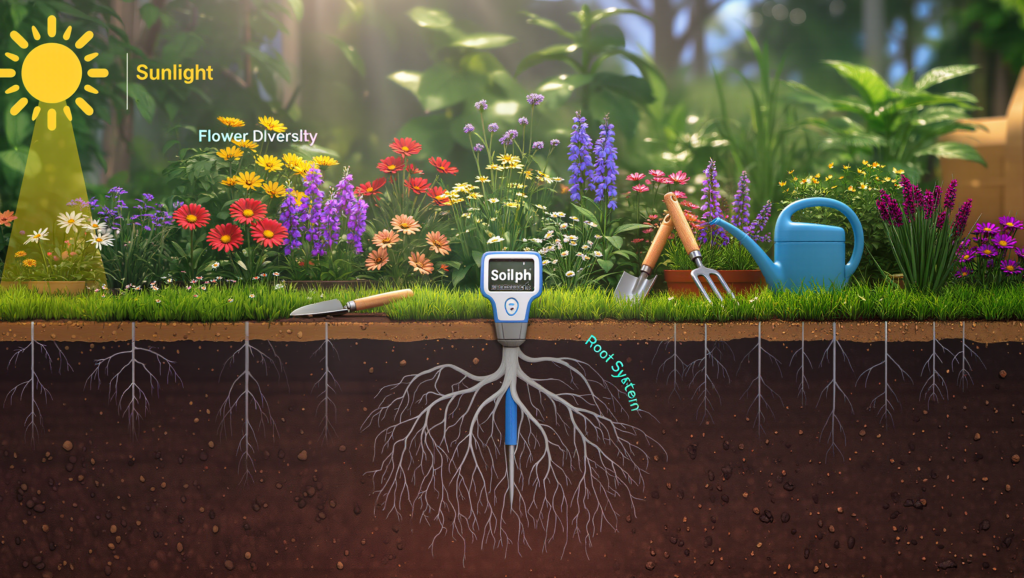As more people grapple with the ethics, health, and environmental impact of meat, a new movement is taking shape: the conscious carnivore. The idea isn’t about giving up meat altogether, nor is it blindly accepting the status quo of the global meat industry. Instead, it’s a mindful middle ground—eating meat with intention, respect, and awareness of animal welfare, environmental sustainability, health, and community. From source to table, every bite can become a positive act for you and the planet. Here’s how to join the “least harm” revolution and become a conscious carnivore.
Understanding the Problems with Conventional Meat
Factory farmed, or CAFO (Confined Animal Feeding Operation) meat dominates the modern food system, delivering cheap protein at massive cost. Key issues include:
- Animals raised in crowded, stressful environments with little regard for welfare.
- Routine use of antibiotics, hormones, and GMO feed for faster, cheaper growth.
- Massive carbon, water, and land footprints; livestock farming emits 14–18% of global greenhouse gases.
- Alarmingly, many consumers have no idea where their meat came from—or under what conditions it was raised.
Ethical Meat: What Makes It Different?
Being a conscious carnivore means prioritizing meat that:
- Comes from animals raised with dignity, free-range or pasture-raised, given space, sunlight, and forage (grass, not just grains).
- Is sourced through regenerative, organic, or sustainable farming practices—minimizing environmental harm, capturing carbon, and building soil.
- Is delivered transparently—preferably from local farmers, butchers, or trusted supply chains, not anonymous mass producers.
Labels matter—look for “100% Grass-Fed,” “Pasture-Raised,” “Certified Humane,” “Animal Welfare Approved,” “Certified Organic,” and “No Added Hormones/Antibiotics”.
Conscious Carnivore Habits: Practical Everyday Choices
1. Shop Smart, Ask Questions
Elevate your standards and ask these questions at the butcher, farmers market, or grocer:
- Was the animal pasture-raised, grass-fed, or free-range?
- What’s the farm’s approach to animal welfare, antibiotics, and feed?
- Is the farm local or regional?
- Is the meat certified organic or regenerative?
Look for third-party labels (Certified Humane, Animal Welfare Approved, USDA Organic, etc.), and don’t be afraid to ask farmers or retailers for more info.
2. Eat Less, Choose Best
Quantity is one lever. Most conscious carnivores eat less meat—especially from ruminants like beef and lamb—to shrink their personal carbon footprint.
- Try going “Meat Lite”: Limit portion size, eat meatless a few days per week, substitute beans or other plant proteins for some meals.
- When you do eat meat, make it matter—savor it, source it well, and treat it as a luxury.
- Why? Eating less but higher-quality meat reduces both suffering and climate impact.
3. Embrace Nose-to-Tail Eating and Smart Storage
Reduce food waste—a major ethical and environmental concern.
- Buy whole animals or larger cuts when possible, using bones, organs, and offal for rich stocks, broths, and unique dishes.
- Properly store, freeze, and use up leftovers and “random bits.” Consider making jerky, sausages, or stews to stretch your investment.
4. Choose Species and Cuts Wisely
Not all meat is equal. Poultry and pork tend to have a lower carbon footprint than beef and lamb, but sourcing still matters.
- Wild-caught fish, game, bison, or heritage breeds often have higher welfare and lower ecological impact.
- Opt for cheaper, overlooked cuts—oxtail, shank, liver, heart, or tongue—often from higher-quality animals and less waste.
5. Understand the Labels (And What They Mean)
| Label/Term | What It Means |
|---|---|
| Grass-Fed | Animals grazed on grass, not grains; more omega-3s; better for welfare |
| Pasture-Raised | Animals roamed outdoors with more space; higher natural diet |
| Certified Humane/Animal Welfare Approved | Independent standards for treatment, handling, and slaughter |
| Organic | No synthetic pesticides, antibiotics, or GMOs; animals get organic feed |
| Regenerative | Farming focuses on restoring soil, capturing carbon, and supporting ecosystems |
| No Hormones/Antibiotics | Unmedicated animals, healthier meat, lower superbug risk |
| Local/Regional | Fresher, smaller supply chains, more transparency |
Why Animal Welfare Matters
- Animals feel pain and suffering. Ethical farmers focus on giving animals “a good life, a good death, a good butchering, and a good preparation”—from birth to harvest.
- Factory farms, standard slaughterhouses, and mass transit systems often fail these basic principles, contributing to stress, injury, and loss of dignity.
- Supporting small farms or direct-from-farmer supply chains with humane practices means less stress and higher animal welfare, documented by food advocates and industry insiders.
Environmental Impact: Meat’s Climate Problem
- Livestock farming drives deforestation, water pollution, and high methane emissions. Beef and lamb are the biggest offenders, but all large-scale animal agriculture is implicated.
- Grass-fed and pastured systems can build soil, restore landscapes, and capture carbon—though total land needed may be higher.
- Regenerative agriculture blends animal and crop systems for holistic, closed-loop nutrient cycling and long-term sustainability.
Health Benefits (And Myths) of Ethical Meat
Ethically raised meats often have:
- Higher omega-3s and micronutrients (vitamin E, iron, vitamin A) due to the animal’s healthier diet and lifestyle.
- Lower residues of antibiotics and hormones (linked to antibiotic resistance and hormone disruption in humans).
- Cleaner and more nutrient-dense fat profiles in pasture-raised ruminants and poultry.
Eating less, but better meat may also reduce your risk of chronic diseases associated with excess consumption of conventional animal products.
Conscious Carnivore Mindset: Gratitude and Mindfulness
Beyond shopping and eating, conscious carnivores practice gratitude for every meal. Acknowledge the life taken, the labor involved, and the ecological footprint. Share meals, express thanks, and treat meat as a valued resource, not an afterthought.
Challenges and Trade-Offs
There’s no perfect system, and being a conscious carnivore means navigating real-world dilemmas:
- Sometimes “better” meat costs more; budget and access vary.
- Some high-welfare meats have higher emissions or land use; balance priorities.
- Policy and supply chains still lag behind ethical consumer demand.
- Transparency is everything—ask questions, visit farms, choose local whenever possible.
Every small act, whether buying local, reducing waste, or eating less but better meat, moves the system toward more humane, sustainable, and healthy outcomes.
Final Thoughts: Your Guide to Ethical Meat Eating
Being a conscious carnivore isn’t just a trend—it’s a way to align values with food choices, embrace community, and champion a food system that respects animals, people, and planet. Buy smart, eat less but better, waste less, support local, know the labels, and approach every meal with gratitude and care. Your fork can help build a more just and sustainable world.
Did you find this article meaningful and useful? Then please help support us by following either one or all of aur pages on social media,. That way you also get to see our videos and posts on other topics that might also be meaningful to you. Youtube, Instagram, Facebook, Pinterest, Twitter (X)








